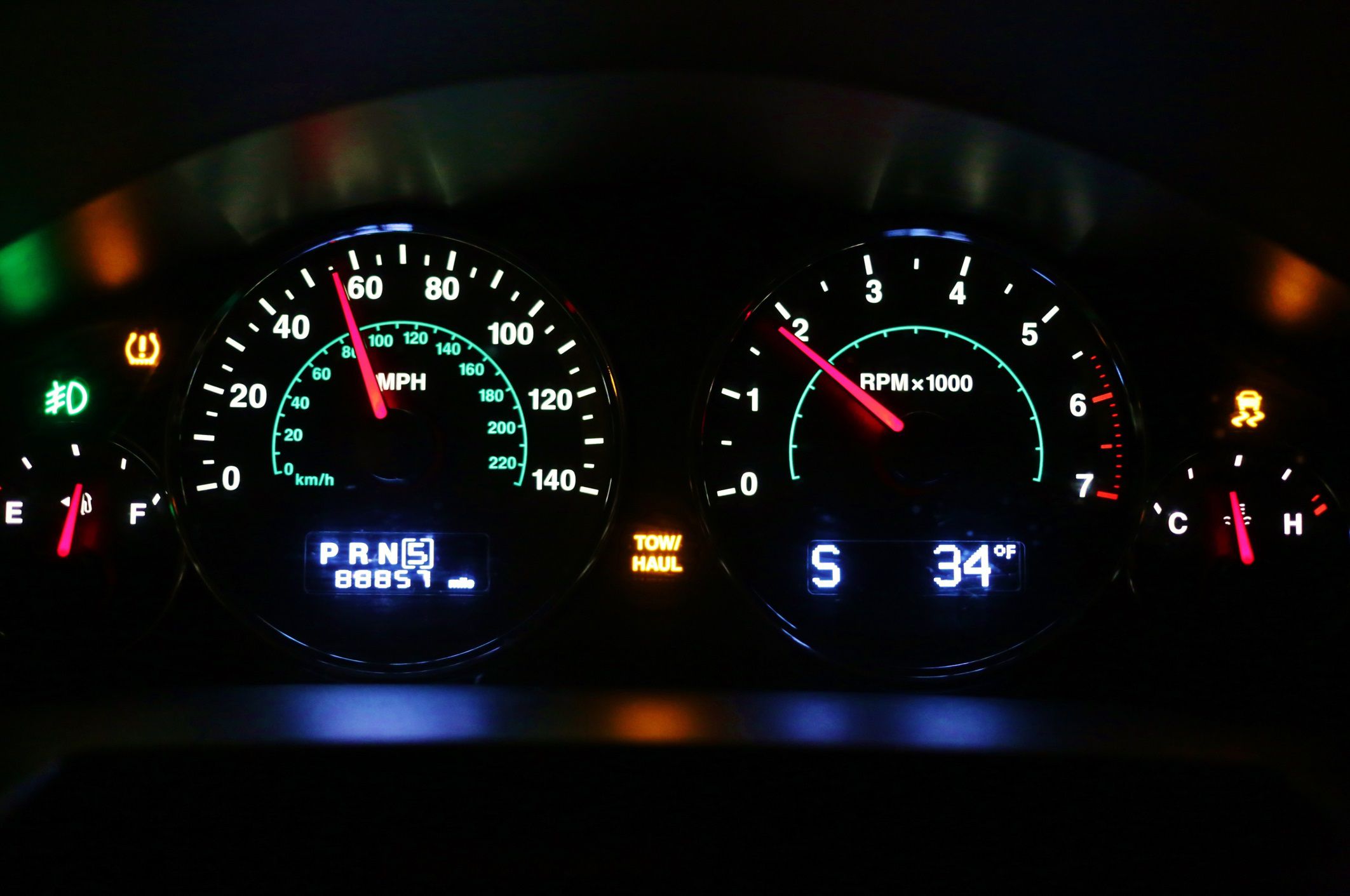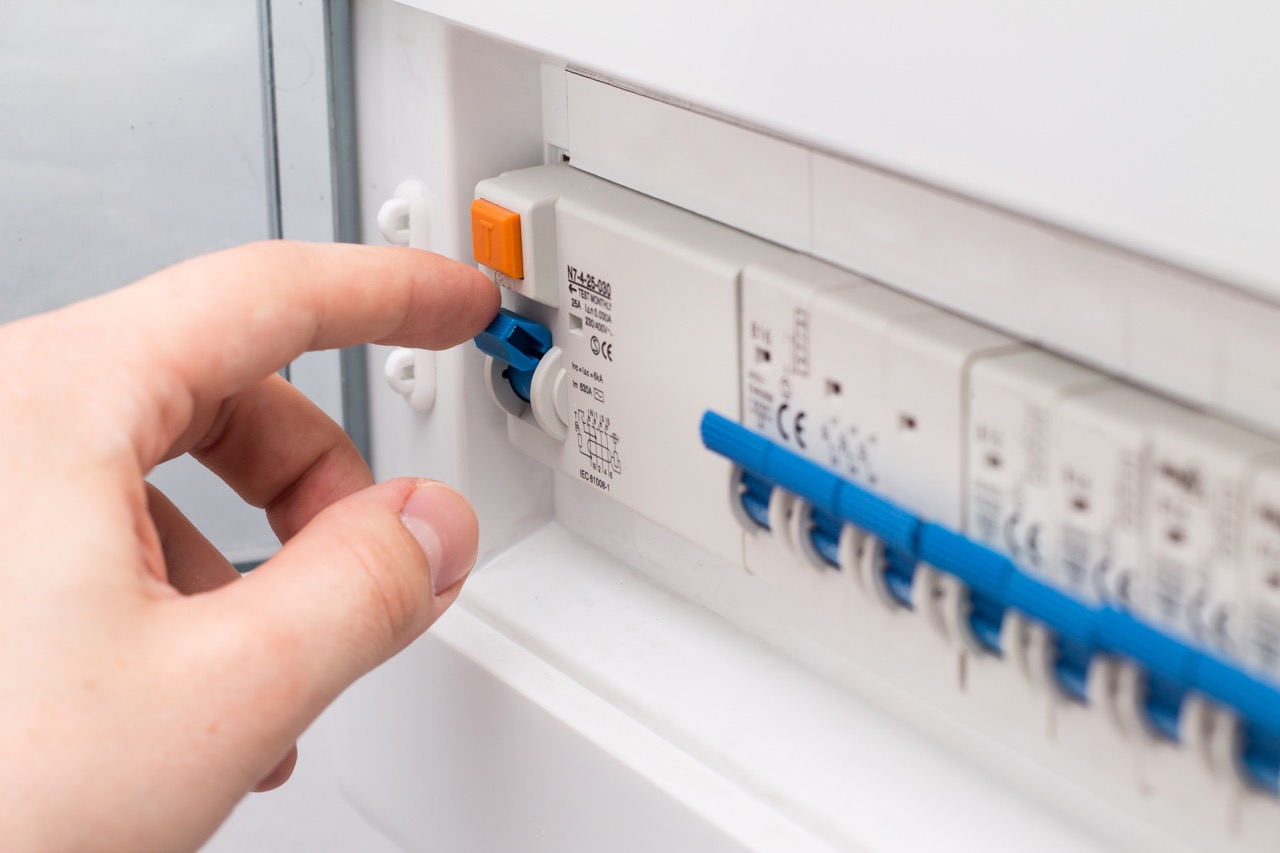Home>Furniture>What Causes The Charging System Warning Lamp To Go Out When The Engine Starts Up?


Furniture
What Causes The Charging System Warning Lamp To Go Out When The Engine Starts Up?
Modified: December 7, 2023
Discover the reasons behind the charging system warning lamp going out upon engine startup. Explore furniture-related tips and troubleshooting solutions to ensure a smooth ignition process.
(Many of the links in this article redirect to a specific reviewed product. Your purchase of these products through affiliate links helps to generate commission for Storables.com, at no extra cost. Learn more)
Introduction
Welcome to our comprehensive guide on the charging system warning lamp, a crucial indicator in your vehicle’s dashboard. If you’ve ever started your engine only to see the charging system warning lamp quickly go out, you may be wondering what causes this to happen. In this article, we’ll explore the common reasons behind the charging system warning lamp going out and what it means for the overall health of your vehicle’s electrical system.
The charging system warning lamp, often represented by a battery symbol, serves as a crucial diagnostic tool. It alerts you to potential issues with the charging system, which consists of the battery, alternator, voltage regulator, wiring, and other components. When you start your engine, the charging system warning lamp typically illuminates for a few seconds as the system conducts a self-check. However, if the lamp immediately goes out, it indicates that the charging system is operating within normal parameters.
Understanding why the charging system warning lamp goes out can help you assess the overall condition of your vehicle’s electrical system. It’s important to note that while the lamp going out is a positive indicator, you should still be vigilant and aware of other warning signs that may indicate an underlying issue. With that in mind, let’s delve into the common causes of the charging system warning lamp going out.
Key Takeaways:
- The charging system warning lamp going out when the engine starts can be caused by issues such as loose battery connections, faulty alternator, defective voltage regulator, damaged wiring, faulty battery, malfunctioning sensor, loose drive belt, or a faulty ignition switch.
- Promptly addressing potential causes of the charging system warning lamp going out is crucial to prevent further electrical problems and ensure the reliable operation of your vehicle. Regular maintenance and timely repairs are essential for optimal charging system performance.
Read more: What Causes A Lawnmower Engine To Surge
Understanding the Charging System Warning Lamp
The charging system warning lamp, also known as the battery light, is an essential component of your vehicle’s dashboard. Its purpose is to alert you to potential problems with the charging system, which is responsible for replenishing the battery’s power and providing electricity to various components in your vehicle.
When you start your engine, the charging system warning lamp will typically illuminate for a brief period. This is part of a self-check process, where the vehicle’s computer system verifies that the charging system is functioning properly. If everything is in order, the lamp will go out, indicating that the charging system is operating within normal parameters.
However, if the charging system warning lamp remains illuminated or comes on while driving, it indicates a potential issue that needs attention. This could be a sign of a failing alternator, a faulty voltage regulator, loose or corroded battery connections, damaged wiring, or even a weak battery.
It’s important to understand that the charging system warning lamp is a vital early warning system. Ignoring it could lead to more severe electrical problems, loss of battery power, or even a breakdown. Therefore, it’s crucial to address any issues as soon as possible to ensure the efficient and reliable operation of your vehicle.
Now that we have a better understanding of the purpose of the charging system warning lamp, let’s explore the common causes of it going out when the engine starts up.
Common Causes of Charging System Warning Lamp Going Out
When the charging system warning lamp goes out immediately after starting your engine, it indicates that the charging system is performing as it should. However, there are several potential reasons why the lamp might go out, and it’s essential to be aware of them to ensure the ongoing health of your vehicle’s electrical system.
Here are some common causes of the charging system warning lamp going out:
- Loose or Corroded Battery Connections: Loose or corroded battery connections can disrupt the flow of electricity between the battery and the rest of the charging system. If the connections are not secure or if there is a buildup of corrosion, the lamp may go out once the engine starts as the system is not getting accurate feedback.
- Faulty Alternator: The alternator plays a crucial role in generating electricity and charging the battery while the engine is running. If the alternator is faulty or not functioning optimally, it may still be able to provide enough power to turn off the charging system warning lamp, but the charging system may not be operating at its full capacity.
- Defective Voltage Regulator: The voltage regulator controls the output voltage of the alternator and ensures that it remains within the acceptable range. If the voltage regulator is defective, it may not be accurately regulating the voltage, causing the lamp to go out while the underlying issue persists.
- Damaged or Faulty Wiring: Damaged or faulty wiring can disrupt the proper flow of electricity within the charging system. If there is a break or short circuit in the wiring, it may cause the charging system warning lamp to go out as it fails to detect the issue.
- Faulty Battery: While a weak battery can cause the charging system warning lamp to illuminate, in some cases, a faulty battery may cause the lamp to go out. If the battery has internal damage or an issue with the cells, it may not trigger the lamp even if it is not fully charging or holding a charge effectively.
- Malfunctioning Charging System Sensor: The charging system sensor provides crucial information to the vehicle’s computer system about the performance of the charging system. If the sensor malfunctions or provides inaccurate readings, it could result in the lamp going out even if there is an underlying issue.
- Loose or Damaged Drive Belt: The drive belt, also known as the serpentine belt, drives various components of the engine, including the alternator. If the drive belt is loose or damaged, it may not be properly turning the alternator, resulting in the charging system warning lamp going out.
- Faulty Ignition Switch: The ignition switch is responsible for starting and powering the electrical systems in your vehicle. If the ignition switch is faulty, it may not provide a proper signal to the charging system, causing the lamp to go out even if there is an underlying issue.
It’s important to note that while the charging system warning lamp going out can be a positive sign, it does not guarantee the absence of any underlying issues. If you notice any other signs of potential charging system problems, such as dimming headlights, a weak battery, or difficulty starting the engine, it’s best to have your vehicle inspected by a qualified technician to identify and address the root cause of the problem.
Issue #1: Loose or Corroded Battery Connections
One common cause of the charging system warning lamp going out is loose or corroded battery connections. The battery connections play a crucial role in the flow of electricity between the battery and the rest of the charging system. When the connections are not secure or when corrosion builds up on the terminals, it can disrupt the proper flow of electricity, leading to various electrical issues.
When the engine starts, the charging system performs a self-check, and if it detects loose or corroded connections, it may briefly illuminate the charging system warning lamp. However, if the connections are not severely compromised and the system still receives enough feedback to determine that the charging system is operating within normal parameters, the lamp may go out.
Loose battery connections can occur over time due to engine vibrations or improper installation. The constant shaking can cause the battery cables to become loose, resulting in a poor electrical connection. On the other hand, corrosion can accumulate on the battery terminals due to exposure to the elements or battery acid leaks.
If you suspect loose or corroded battery connections as the cause of the charging system warning lamp going out, it’s important to address this issue promptly. Here’s what you can do:
- Inspect the Battery Connections: Start by visually inspecting the battery connections. Look for any signs of looseness or corrosion on the terminals. If you notice corrosion, you can clean it off using a wire brush and a mixture of baking soda and water. Rinse the terminals with clean water afterward.
- Tighten the Connections: If the battery connections are loose, use a wrench or socket to tighten the terminal clamps. Make sure they are secure, but be careful not to overtighten them as it could damage the terminals.
- Apply Battery Terminal Grease: After cleaning and tightening the battery connections, applying battery terminal grease can help prevent future corrosion. This grease creates a barrier that inhibits the formation of corrosion on the terminals.
It’s important to note that if you are unsure or uncomfortable performing these steps yourself, it’s always recommended to seek assistance from a qualified technician. They have the knowledge and expertise to handle battery connections properly and ensure the safety and reliability of your vehicle’s electrical system.
Addressing loose or corroded battery connections can help restore proper electrical flow and prevent potential issues with the charging system. Regularly checking and maintaining the battery connections is a good practice to ensure the overall health of your vehicle’s electrical system.
Issue #2: Faulty Alternator
Another common cause of the charging system warning lamp going out is a faulty alternator. The alternator plays a vital role in generating electricity and charging the battery while the engine is running. It converts mechanical energy from the engine into electrical energy, supplying power to various electrical components in the vehicle and replenishing the battery’s charge.
If the alternator is not functioning properly, it may still be able to provide enough power to turn off the charging system warning lamp when the engine starts. However, the charging system may not be operating at its full capacity, and a faulty alternator could potentially lead to a weakened battery and electrical problems down the line.
There are several signs that could indicate a faulty alternator:
- Dimming headlights or interior lights
- Erratic or flickering dashboard lights
- Battery warning light on the dashboard
- Difficulty starting the engine
- Electrical accessories not functioning properly
- Strange noises coming from the alternator
- A burning smell
If you suspect a faulty alternator as the cause of the charging system warning lamp going out, it’s important to have it inspected and remedied. Here’s what you can do:
- Check the Drive Belt: The drive belt connects the alternator to the engine, allowing it to rotate and generate electricity. Inspect the drive belt for any signs of wear, cracks, or looseness. If necessary, tighten or replace the drive belt to ensure proper functionality.
- Measure Charging Voltage: Use a multimeter to measure the charging voltage at the battery terminals while the engine is running. A healthy alternator should produce a voltage between 13.8 and 14.4 volts. If the voltage is below or exceeding this range, it could indicate a problem with the alternator.
- Consult a Professional: If you are not comfortable performing these tests or suspect a more complex issue, it is best to consult a qualified technician. They have the expertise and diagnostic tools to accurately assess the alternator’s condition and recommend the necessary repairs or replacements.
Addressing a faulty alternator promptly is crucial to prevent further electrical problems and ensure the reliable operation of your vehicle. A qualified technician can determine the best course of action and provide the necessary repairs or replacements to restore your vehicle’s charging system to optimal performance.
Read more: What Is An HVAC Engineer
Issue #3: Defective Voltage Regulator
A defective voltage regulator is another potential cause for the charging system warning lamp going out when the engine starts. The voltage regulator is responsible for regulating the output voltage of the alternator, ensuring that it remains within the acceptable range to prevent overcharging or undercharging of the battery.
When the voltage regulator is not functioning properly, it may not be accurately regulating the voltage, causing the charging system warning lamp to go out while an underlying issue persists. This can lead to a variety of electrical problems, including a weakened battery and potential damage to other electrical components.
Here are some signs that may indicate a defective voltage regulator:
- Fluctuating or inconsistent charging voltage
- Overcharging or undercharging of the battery
- Dimming or flickering lights
- Electrical accessories not operating correctly
- Battery draining quickly
If you suspect a defective voltage regulator as the cause of the charging system warning lamp going out, it’s important to have it inspected and repaired. Here’s what you can do:
- Check Charging Voltage: Use a multimeter to measure the charging voltage at the battery terminals while the engine is running. A fluctuating or inconsistent voltage reading could indicate a problem with the voltage regulator.
- Diagnose with a Professional: If you are not familiar with electrical systems or suspect a more complex issue, it’s best to consult a qualified technician. They have the knowledge and diagnostic tools to accurately assess the voltage regulator’s condition and determine the necessary repairs or replacements.
- Replace the Voltage Regulator: If the voltage regulator is indeed defective, it will likely need to be replaced. Depending on the vehicle, the voltage regulator may be an integral part of the alternator, or it may be a separate component. A professional technician can guide you through the process and ensure that the replacement is done correctly.
Addressing a defective voltage regulator is crucial for maintaining a healthy charging system and preventing further electrical issues. A qualified technician can accurately diagnose the problem and provide the necessary repairs or replacements to restore optimal performance to your vehicle’s charging system.
Check the alternator belt for proper tension and wear. A loose or worn belt can cause the charging system warning lamp to go out when the engine starts up.
Issue #4: Damaged or Faulty Wiring
Another possible cause for the charging system warning lamp going out is damaged or faulty wiring within the charging system. Wiring carries the electrical current throughout the system, connecting various components such as the battery, alternator, voltage regulator, and other electrical accessories.
If there is a break, short circuit, or corrosion in the wiring, it can disrupt the flow of electricity and cause issues within the charging system. In some cases, the charging system warning lamp may go out as the system fails to detect the underlying wiring issue, giving a false sense of normal operation.
Here are some signs that may indicate damaged or faulty wiring:
- Flickering or intermittent charging system warning lamp
- Electrical accessories behaving erratically
- Intermittent loss of electrical power
- Visible signs of damaged wiring, such as fraying, melting, or exposed wires
If you suspect damaged or faulty wiring as the cause of the charging system warning lamp going out, it’s crucial to address the issue promptly to prevent further electrical problems. Here’s what you can do:
- Visual Inspection: Perform a visual inspection of the wiring within the charging system. Look for signs of damage, such as frayed or melted insulation, exposed wires, or corrosion. If you notice any issues, it’s important to proceed with caution and take appropriate measures to repair or replace the affected wiring.
- Test Electrical Connections: Use a multimeter to test the continuity and resistance of the wiring connections within the charging system. This can help identify any breaks or short circuits in the wiring that may be causing the issue.
- Repair or Replace Damaged Wiring: If you discover damaged or faulty wiring, it’s crucial to address the problem. Depending on the severity and location of the damage, you may be able to repair the wiring using electrical tape, soldering, or connectors. In some cases, it may be necessary to replace the affected wiring to ensure a reliable and safe charging system.
It’s important to note that working with electrical wiring can be complex and potentially dangerous. If you are not familiar with automotive wiring or feel uncertain about the repairs, it’s recommended to consult a qualified technician. They have the expertise and knowledge to properly diagnose and address wiring problems within the charging system.
By addressing damaged or faulty wiring promptly, you can ensure the proper flow of electricity in your vehicle’s charging system, preventing further electrical issues and maintaining the overall health of your vehicle.
Issue #5: Faulty Battery
A faulty battery can be another reason why the charging system warning lamp goes out when the engine starts. While a weak or failing battery often causes the charging system warning lamp to illuminate, in some cases, a faulty battery may not trigger the lamp even if it is not fully charging or holding a charge effectively.
A battery can become faulty due to various reasons, including age, excessive discharging, or internal damage. When a battery is not able to provide sufficient power to the electrical system, the charging system may compensate and keep the lamp from illuminating, giving a false impression of normal operation.
Here are some signs that may indicate a faulty battery:
- Slow or struggling engine cranking
- Dimming headlights or interior lights
- Electrical accessories not functioning properly
- Battery fluid leakage
- Visible signs of damage or corrosion on the battery
- Battery failing a load test
If you suspect a faulty battery as the cause of the charging system warning lamp going out, it’s important to have it tested and, if necessary, replaced. Here’s what you can do:
- Perform a Battery Load Test: A load test measures the battery’s ability to deliver a current while under load. This test can help determine the battery’s health and whether it is capable of holding a charge properly. If the battery fails the load test, it’s a strong indication that it needs to be replaced.
- Inspect the Battery: Check the battery for any visible signs of damage, leakage, or corrosion. If there is visible damage or corrosion on the battery terminals, it may be impacting the battery’s performance and contributing to the charging system warning lamp going out.
- Replace the Battery: If you determine that the battery is faulty, it’s important to replace it with a new one. Consult your vehicle’s manual or seek guidance from a professional to ensure you select the correct type and size of battery for your vehicle.
It’s important to address a faulty battery promptly to prevent further electrical issues and ensure reliable vehicle operation. A qualified technician can help you accurately diagnose the problem and assist with battery replacement if necessary.
Regular battery maintenance, such as cleaning the terminals and ensuring a proper charge, can also help prolong the life of your battery and prevent issues that could lead to the charging system warning lamp going out.
Issue #6: Malfunctioning Charging System Sensor
A malfunctioning charging system sensor is another potential cause for the charging system warning lamp going out when the engine starts. The charging system sensor is responsible for providing crucial information to the vehicle’s computer system about the performance of the charging system.
If the sensor malfunctions or provides inaccurate readings, it can lead to incorrect feedback to the charging system warning lamp, causing it to go out even if there is an underlying issue. This can result in a false sense of normal operation and potentially prevent timely detection and resolution of charging system problems.
Here are some signs that may indicate a malfunctioning charging system sensor:
- Inconsistent or inaccurate charging system warning lamp behavior
- Inaccurate voltage readings on the dashboard
- Flickering or intermittent dashboard lights
- Electrical system issues without clear explanation
If you suspect a malfunctioning charging system sensor, it’s essential to have it diagnosed and repaired. Here’s what you can do:
- Scan for Error Codes: Use an OBD-II scanner to check for any error codes related to the charging system or sensors. These codes can help pinpoint the specific sensor that may be malfunctioning.
- Inspect the Sensor and Wiring: Visually inspect the sensor and its wiring for any signs of damage, loose connections, or corrosion. Repair or replace any faulty wiring or damaged components as necessary.
- Replace the Sensor: If the sensor is determined to be faulty, it may need to be replaced. Consult a professional technician to ensure the correct sensor is selected and properly installed.
It’s important to address a malfunctioning charging system sensor as it can affect the accuracy of the charging system warning lamp, potentially leading to undetected issues within the charging system. A qualified technician can properly diagnose the problem and recommend the necessary repairs or replacements to restore the sensor’s functionality.
Regular maintenance and periodic inspections of the charging system can help identify any potential sensor issues and ensure the accurate monitoring of the charging system’s performance.
Read more: Hip Pain When Going Up Stairs
Issue #7: Loose or Damaged Drive Belt
A common cause for the charging system warning lamp going out when the engine starts is a loose or damaged drive belt, also known as the serpentine belt. The drive belt plays a crucial role in turning various components of the engine, including the alternator, which is responsible for charging the battery and powering electrical systems while the engine is running.
If the drive belt is loose or damaged, it may not be properly turning the alternator. This can result in a lack of power generation and an inaccurate feedback to the charging system warning lamp, causing it to go out despite an underlying issue.
Here are some signs that may indicate a loose or damaged drive belt:
- Squealing or chirping noise coming from the engine
- Visible signs of wear, cracks, fraying, or glazing on the belt
- A loose or slack belt
- Electrical accessories not functioning correctly
If you suspect a loose or damaged drive belt as the cause of the charging system warning lamp going out, it’s crucial to address the issue promptly to ensure proper charging system operation. Here’s what you can do:
- Inspect the Drive Belt: Visually inspect the drive belt for any signs of wear, cracks, fraying, or glazing. Ensure that the belt is properly tensioned and tightened.
- Check Belt Tension: Using a belt tension gauge or applying moderate pressure with your hand, check the tension of the drive belt. It should have the proper tension according to the vehicle’s specifications. If the belt is loose, it may need to be tightened or replaced.
- Replace the Drive Belt: If the drive belt is damaged beyond repair or the tension cannot be properly adjusted, it may need to be replaced. Consult your vehicle’s manual or a professional technician to ensure the correct type and size of the belt for your specific vehicle.
Addressing a loose or damaged drive belt is essential to ensure the proper functioning of the alternator and the charging system as a whole. A qualified technician can provide the necessary repairs or replacements to restore optimal belt tension and ensure reliable charging system operation.
Regular inspection of the drive belt and adherence to the manufacturer’s recommended maintenance schedule can help prevent issues with the drive belt and ensure the longevity of the charging system components.
Issue #8: Faulty Ignition Switch
The ignition switch is responsible for initiating and powering the electrical systems in your vehicle. If the ignition switch is faulty, it may not provide a proper signal to the charging system, leading to the charging system warning lamp going out even if there is an underlying issue.
When you turn the key or push the start button, the ignition switch sends a signal to the charging system, indicating that the engine is starting. This action prompts the charging system to perform a self-check, and if all is well, the charging system warning lamp should illuminate briefly and then go out. However, if the ignition switch fails to provide the correct signal, the lamp may go out immediately or fail to illuminate at all, hiding potential charging system problems.
Here are some signs that may indicate a faulty ignition switch:
- Difficulty starting the engine
- Inconsistent or intermittent operation of electrical systems
- Dashboard lights behaving erratically
- Loss of power to various electrical components
- Charging system warning lamp not illuminating or illuminating incorrectly
If you suspect a faulty ignition switch as the cause of the charging system warning lamp going out, it’s important to address the issue promptly to ensure proper charging system operation. Here’s what you can do:
- Inspect the Ignition Switch: Check the ignition switch for any visible signs of damage, such as burnt connections or loose wiring. Ensure that all connections are secure and that there are no apparent issues with the switch itself.
- Test the Ignition Switch: Using a multimeter, test the continuity and output of the ignition switch to ensure it is functioning correctly. Consult your vehicle’s manual or a professional technician for the specific testing procedure for your vehicle’s ignition switch.
- Replace the Ignition Switch: If the ignition switch is determined to be faulty, it will likely need to be replaced. This is a task best left to a qualified technician who has the expertise to safely remove and install a new ignition switch.
Addressing a faulty ignition switch is crucial to ensure the proper functioning of the charging system and overall vehicle operation. A professional technician can accurately diagnose the issue and recommend the necessary repairs or replacements to restore the ignition switch’s functionality.
Regular maintenance, including inspecting and cleaning the ignition switch contacts, can help prevent issues and ensure the longevity of the ignition switch and the charging system as a whole.
Conclusion
The charging system warning lamp is a crucial indicator in your vehicle’s dashboard, alerting you to potential issues with the charging system. While the lamp going out when the engine starts may seem like a positive sign, it’s important to understand the common causes behind it to ensure the overall health of your vehicle’s electrical system.
We explored several potential causes for the charging system warning lamp going out, including loose or corroded battery connections, a faulty alternator, a defective voltage regulator, damaged or faulty wiring, a faulty battery, a malfunctioning charging system sensor, a loose or damaged drive belt, and a faulty ignition switch.
If you encounter any of these issues, it’s crucial to address them promptly to prevent further electrical problems and ensure the reliable operation of your vehicle. Regular maintenance, including inspecting and cleaning battery connections, checking belt tension, and adhering to the manufacturer’s recommended maintenance schedule, can help prevent charging system problems.
However, it’s important to note that troubleshooting and repairing charging system issues can be complex tasks, requiring specialized knowledge and tools. If you are unsure or uncomfortable performing the necessary inspections or repairs, it’s best to consult a qualified technician who has the expertise to diagnose and rectify charging system problems effectively and safely.
By keeping a close eye on the charging system warning lamp and attending to any underlying issues, you can ensure the proper functioning of your vehicle’s charging system, extend the life of your battery and other electrical components, and enjoy a reliable and efficient driving experience.
Remember, proper maintenance, regular inspections, and timely repairs are key to keeping your vehicle’s charging system in optimal condition and ensuring a smooth and trouble-free driving experience.
Frequently Asked Questions about What Causes The Charging System Warning Lamp To Go Out When The Engine Starts Up?
Was this page helpful?
At Storables.com, we guarantee accurate and reliable information. Our content, validated by Expert Board Contributors, is crafted following stringent Editorial Policies. We're committed to providing you with well-researched, expert-backed insights for all your informational needs.













